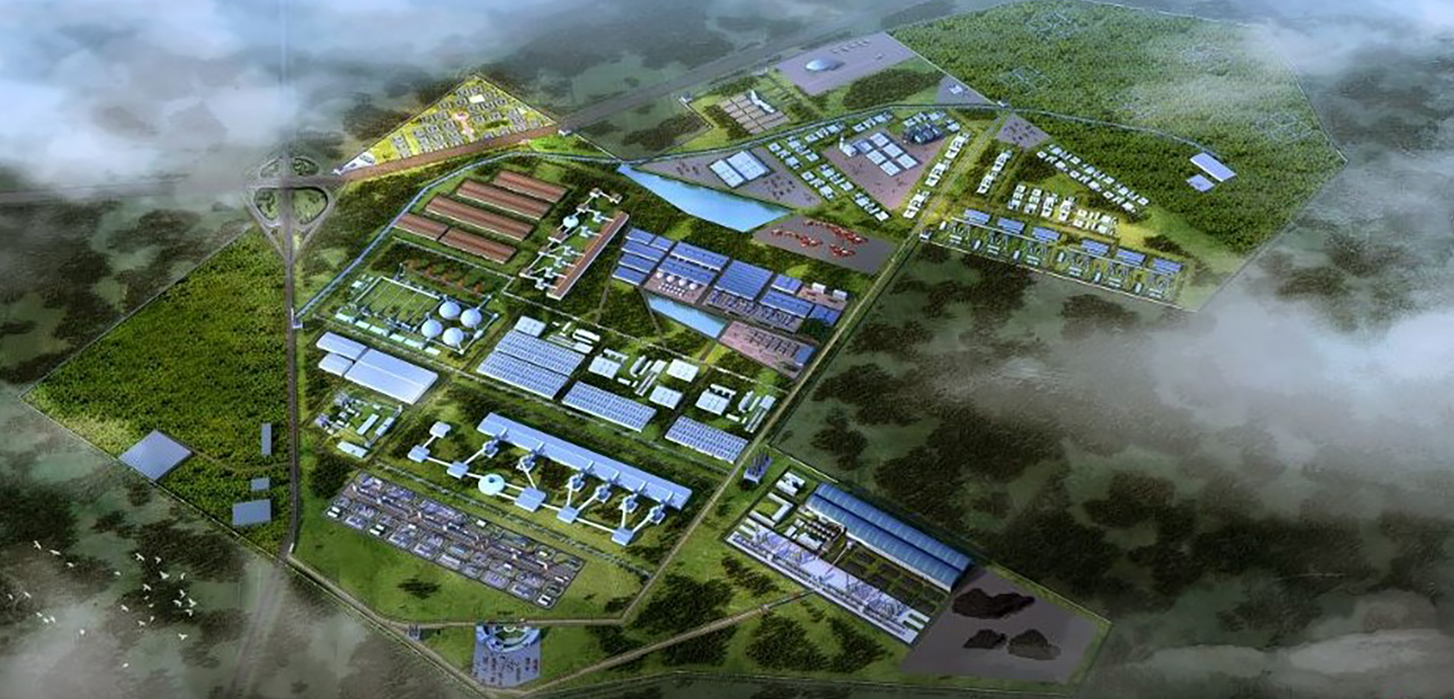Daily Maverick has confirmed that a specialist study on air pollution and climate change impacts from the first phase of the proposed Musina-Makhado Special Economic Zone considered only 12.5% of the metal alloy production volume – suggesting that impacts have been underestimated by as much as 87.5%.
The studies were done by Midrand-based Airshed Planning Professionals, which was commissioned through the Polokwane-based Gudani Consulting group as part of a mandatory environmental impact assessment (EIA).
It remains unclear whether this was the result of an almost inexplicable communication blunder or a deliberate attempt to minimise the true impacts of a project expected to generate large volumes of greenhouse gases and tiny metal dust particles linked to respiratory and heart disease and certain forms of cancer.
Environmental approvals for an earlier iteration of the China-South Africa heavy industry and energy zone 40km south of Musina remain under legal challenge in the Polokwane Division of the High Court in Limpopo. This is partly because opponents argue that there have been deliberate efforts to break up a major development plan into several smaller pieces, to camouflage the full cumulative impacts when applying for environmental authorisation.
/file/dailymaverick/wp-content/uploads/2025/09/trickery-4-source-Kinetic-Development-Group.jpg)
According to Airshed, it was briefed by Gudani to model the impacts of a ferrochrome smelting plant with a production volume of 125,000 tpa (tonnes per annum), whereas the China-based Kinetic Development Group has in fact applied for environmental authorisation to build two smelters with an initial production volume of 125,000 tpa – rising to eight smelters producing one million tpa within five years.
Based on its flawed assessment of both air pollution and climate change, Airshed recommended the authorisation of the project.
Significantly, however, the project was very clearly advertised as a million-tonne project as far back as September 2024, while other specialist consultants were also informed that the envisaged production would increase to one million tpa.
/file/dailymaverick/wp-content/uploads/2025/09/trickery-2-The-cover-page-of-Kinetic-draft-environmental-impact-report-clearly-indicating-the-ambitions-of-the-developer-Source-Gudani-Consulting.jpg)
But not Airshed apparently, which states that it was asked to model only the lower volume in relation to the air pollution, human health and climate change impacts of the initial metallurgical cluster.
Durban-based All Rise Attorneys, who were among the first stakeholders to pick up the gross discrepancies in emission calculations by Airshed, have now called for all relevant environmental impact reports to be repeated, along with a fresh round of public consultation.
/file/dailymaverick/wp-content/uploads/2025/09/trickery-5-An-extract-from-court-papers-criticising-the-project-splitting-approach-of-the-Limpopo-Economic-Development-Environment-and-Tourism-Department-LEDET-Source-Court-papers.jpg)
Airshed’s principal air quality and environmental noise specialist, Reneé von Gruenewaldt, did not respond directly to Daily Maverick’s question on whether the consultancy believed it had been duped into deliberately underestimating the impacts.
However, she said that Airshed was “in the process of addressing the inconsistency with Gudani and will be updating the Air Quality and Climate Change impact assessments to support environmental authorisation” as well as an Atmospheric Emission Licence application to account for eight furnace workshops and a total production rate of 1 Mtpa (one million tpa).
“Given that the 1 Mtpa production is higher, the conclusions may change, but the impacts are not necessarily a linear scale-up and it would be too speculative, before these updated assessments have been completed, to state how the conclusion would change.”
In response to questions on how the error came about, and whether Airshed was not aware of the extensive public documentation and client advertisements confirming Kinetic’s intention to expand production to 1 Mtpa, she said Airshed’s studies were based on the lower production volumes “as was supplied at the outset of the project by the project proponent (KDG, via Gudani), in specific response to the detailed List of Requirements. This is a list containing all information required by Airshed to conduct these specialist assessments.”
“We first became aware of the discrepancy through the objections made by All Rise Attorneys, which were provided to us by Gudani on 26th of August, and which we were requested by Gudani to respond to by 15th of September.”
Von Gruenewaldt suggested that it could take about four weeks to update the “discrepancies”.
Kirsten Youens of All Rise Attorneys – acting on behalf of the Herd Reserve, Living Limpopo and the Centre for Applied Legal Studies – has welcomed the decision to redo the air quality and climate change reports using the correct data.
However, all other relevant studies, including the health impact assessment, should also be revised.
“In our view, the only meaningful way to address this major issue is to repeat the Environmental Impact Report phase, including all revised studies and commence with a fresh round of public participation.”
/file/dailymaverick/wp-content/uploads/2025/09/trickery-3-gudani-director-setenane-nkopane-from-gudani-website.jpg)
Neither Kinetic nor Gudani have responded to Daily Maverick’s requests for clarity on how the blunders came about. Gudani director Setenane Nkopane simply acknowledged our query, noting that the “comments” had been received and were being attended to. DM




 A rendering of the proposed Chinese metal smelting zone in Limpopo. (Photo: SAEMB)
A rendering of the proposed Chinese metal smelting zone in Limpopo. (Photo: SAEMB)